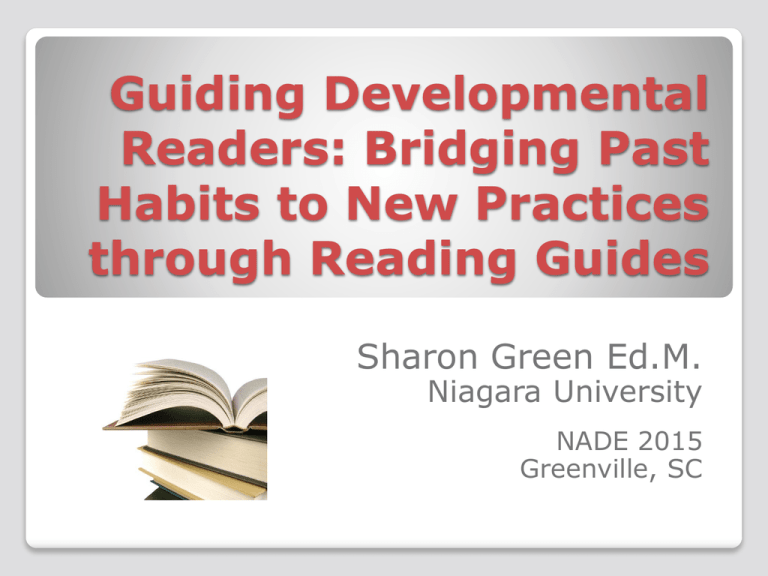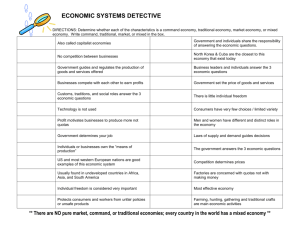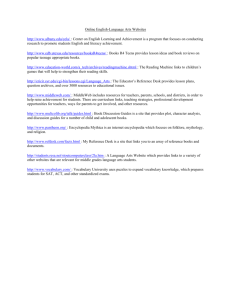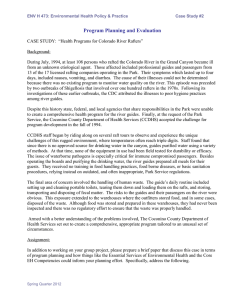NADE 2015 Guiding Developmental Readers...with READING
advertisement

Guiding Developmental Readers: Bridging Past Habits to New Practices through Reading Guides Sharon Green Ed.M. Niagara University NADE 2015 Greenville, SC Niagara University ◦ Private, four-year liberal arts institution ◦ Most first-year students are traditional age CRL 101, “Critical Literacy” ◦ 3-credit humanities elective ◦ Combined reading/writing course; limited time for direct reading instruction ◦ Students are recommended for CRL 101 based on SAT/ACT scores, NYS English Language Assessment, & high school English grades. Why do developmental students have a limited reading background? ◦ ◦ ◦ ◦ ◦ ◦ ◦ ◦ ◦ ◦ They have a limited reading history. They dislike reading. They read cursorily “just to get it done.” They haven’t developed a repertoire of reading strategies. They haven’t been held accountable for assigned reading. They seldom read for pleasure. They may have a reading disability. Jobs, sports, and extracurricular activities may limit their time to read. They may lack motivation. They may be lazy. CRL 101: Student Learning Goals for Reading ◦ Students will increase literal and analytical comprehension. ◦ Students will increase their college-level vocabulary. ◦ Students will recognize the importance of reading as learning. Structure of CRL 101 ◦ 1-2 short articles per class ◦ Some articles are challenging (Paulo Freire; David Brooks; Paul Krugman; James Loewen; Leonard Pitts) ◦ Book Project (15%): Students read one fulllength book (six choices; five nonfiction) ◦ Three argument papers (10%, 15%, & 20%), using course articles ◦ Weekly small-group Recitation, focusing on vocabulary and literal comprehension In Fall 2014, I introduced Reading Guides ◦ Based on a model in John C. Bean’s Engaging Ideas: The Professor’s Guide to Integrating Writing, Critical Thinking and Active Learning in the Classroom (2011). ◦ The Reading Guides accompany the first ten articles of the semester. Strategies embedded in the Reading Guides ◦ Previewing ◦ Predicting ◦ Noticing structure and organization of text ◦ Locating main ideas ◦ Annotating text ◦ Asking questions ◦ Increasing vocabulary ◦ Allocating adequate time for reading ◦ Eliminating distractions ◦ Expanding background information Integrating Reading Guides in CRL 101 ◦ Students receive them in the previous class. ◦ Students can use them as much or as little as they like. ◦ I don’t collect them but in class I scan while circulating the room. SAMPLE READING GUIDES (will be distributed during the presentation) Assessing the Effectiveness of Reading Guides (Fall 2014) First Assessment (end of Week 2) ◦ “Are you following the suggestions on the Reading Guides?” Yes: 88% No: 12% ◦ “Did the Reading Guide for the first article (by John Chaffee) help you feel more prepared for Quiz #1?” Yes: 74% No: 26% Second assessment (Week 5) ◦ Have you been using the Reading Guides? ◦ Yes, all of them: 12 Yes: but just a few: 12 ◦ Yes, most of them: 14 No: 2 ◦ If you answered “Yes,” have the Reading Guides been helpful? Yes: 23 Somewhat: 11 Not really: 1 ◦ If you answered “Yes,” do you answer the questions and fill in the definitions on the Reading Guides? Yes, most of them: 16 Yes, some of them: 11 Yes, but just a few: 6 ◦ Have you used any suggestions from the Reading Guide for readings in your other courses? Yes: 31 No: 9 ◦ Should we continue to use Reading Guides in this class? Yes: 32/40 (80%) Adapting Reading Guides to other texts ◦ Textbooks chapters ◦ Journal articles ◦ Literature Future plans ◦ Prepare more Reading Guides ◦ Indicate on syllabus which articles have an accompanying Reading Guide ◦ Collect occasionally Sharon Green Niagara University 716-286-8071 sgreen@niagara.edu



